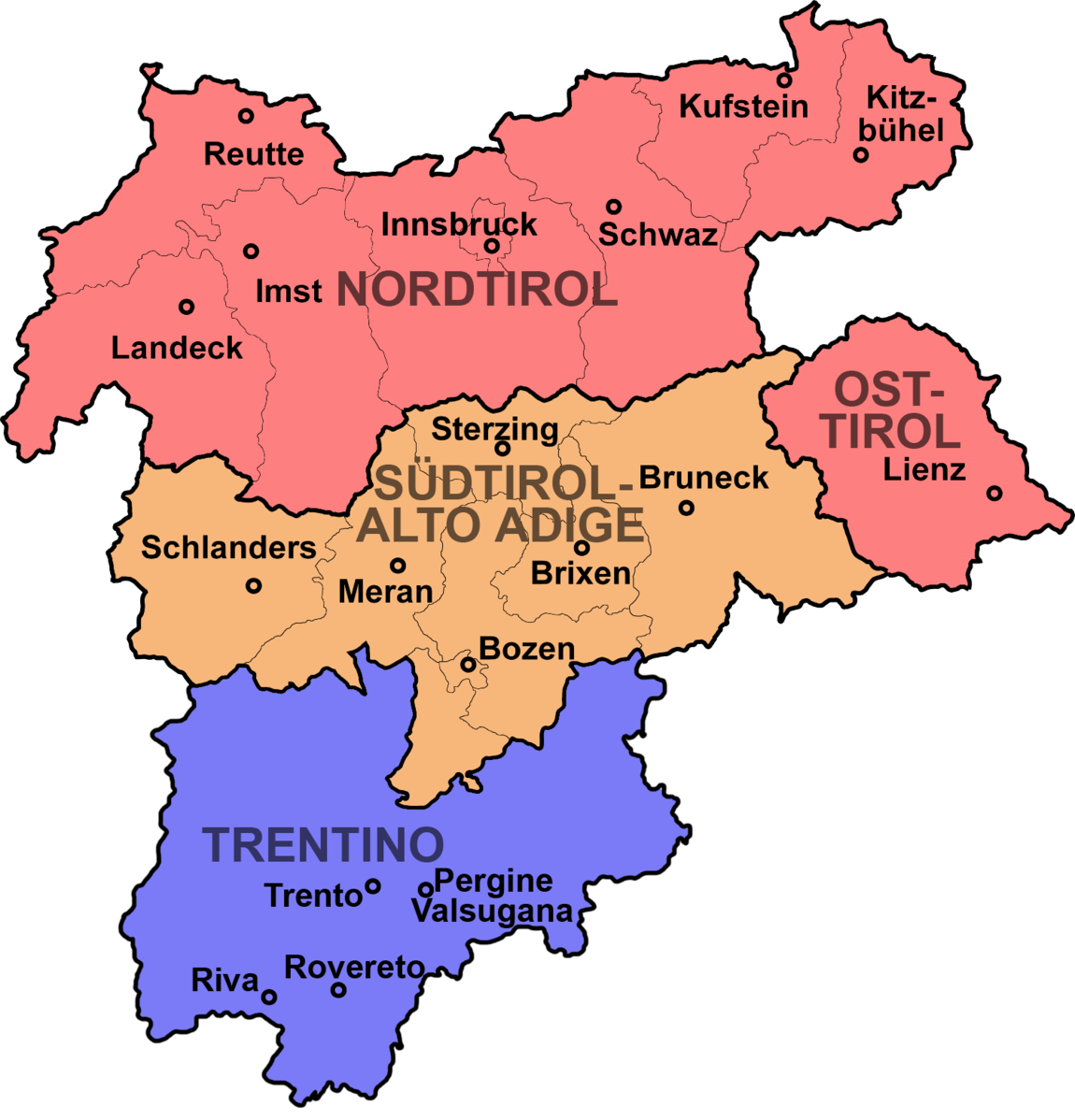Introduction to the region: Trentino- Alto Adige
Mountains. The region of Trentino-Alto Adige is very much about the mountains. A mountain escape provides relief from the heat of summer, but it is more than that. I have to admit, I kind of scoffed at the notion of a mountain sojourn truly providing solace and rejuvenation, that was until I visited this region of Italy.
The specific mountains in this region are the Dolomites, which are called as such, but they actually still a part of the Alps. They are, in fact, the “mountain group lying in the eastern section of the northern Italian Alps, bounded by the valleys of the Isarco (northwest), the Pusteria (north), the Piave (east and southeast), the Brenta (southwest), and the Adige (west),” according to Encyclopedia Britannica. Some argue that using the name (Dolomites) helps distinguish from the northwestern Italian Alps (explored in the regional focus on Valle d'Aosta) and inform that ‘Italian Alps’ will always refer to this northwestern part. Still, the Dolomites, though given their own name, technically belong to the wide-reaching Alps. The Alps generally are wide-ranging as they cover eight countries: France, Switzerland, Monaco, Italy, Liechtenstein, Austria, Germany, and Slovenia. This is always good trivia knowledge to have in your back pocket.
But we are not done yet. The Dolomites, themselves, have been named a UNESCO world heritage site because they are “are widely regarded as being among the most attractive mountain landscapes in the world.” Another distinguishing factor, fully explored on the UNESCO website is the ‘geomorphology’ as they are composed of ‘dolomitic limestone’ endowing them with that particular aesthetic of “light-coloured dolomitic limestone, which erosion has carved into grotesque shapes.”
Another clarification for this region, which is both political and geographical, regards the designation ‘alto-adige’. This refers to the ‘upper’ (alto) part of the Adige river which flows through the area. The name was actually coined by Napoleon, and this is where many problems (geographical and political, in fact) started. Much like the region of Friuli Venezia Giulia, the double-barreled names suggest a story of unification, but often unwillingly, and in both of these regions there are some cultural, linguistic and national diversities that must be addressed.
The hyphen in Trentino-Alto Adige, by the way, is correct, unlike in Friuli Venezia Giulia. (Read more at the top of this post.) ‘Trentino’ and ‘Alto Adige’ (also known as South Tyrol) are the two self governing provinces that make up this autonomous region. If you tag Alto Adige on Instagram, you will see Südtirol, or South Tyrol, come up as well. South Tyrol is synonymous with Alto Adige in objective terms. But as language holds power, using this term could be perceived as making a political statement. Why? A county of Tyrol was established in the Holy Roman Empire during the 12th century. This territory spanned what is now divided into Austria (North Tyrol) and the Italian South Tyrol or Alto Adige. Thus, for centuries this area now divided by national borders was united into one region and one language, German. Napoleon Bonaparte came into the equation with his conquests in the early 19th century and named the area the ‘Department of Alto Adige’. Then, to complicate things further, in the 20th century, at the close of World War 1 and the dissolution of the Austro-Hungarian Empire, the area was annexed by Italy with the defeat of the central powers.
The history continues during World War 2. According to an article published by the BBC, when the war broke out “Hitler and Mussolini agreed to give the German speakers a choice - stay in South Tyrol and become forcibly integrated into Italian language and culture, or emigrate to the German Reich and give up their ancestral homeland.” This choice, albeit brutal, was given, because of the alliance between Fascist Italy led by Mussolini and Hitler’s Nazi Germany at the time.
Now, there is relative peace in the region, albeit the citizens in the autonomous province live with a tumultuous history. In optimistic terms, the history brings the multiculturalism that still defines this region of Italy, in linguistic, culinary and broadly cultural terms. In addition to the continued prevalence of the German language, the linguistic heritage also contains a unique romance language called Ladin, spoken in these parts. The last census (2011) to record statistics shows that there are about 20,000 people who consider Ladin their native tongue. As might be expected, the name derives from Latin, but it is considered a “vulgar latin”. If this topic truly piques your interest, make the Ladin museum, a special stop during your trip. It is about a 2-hour drive from Vason.
Two popular destinations that I have not yet had the opportunity to visit are the city of Bolzano and large ski area of Cortina d’Ampezzo. These two destinations are high on my list and I am hoping for another trip in the near future, so that I can add a ‘regional features’ post about them.



